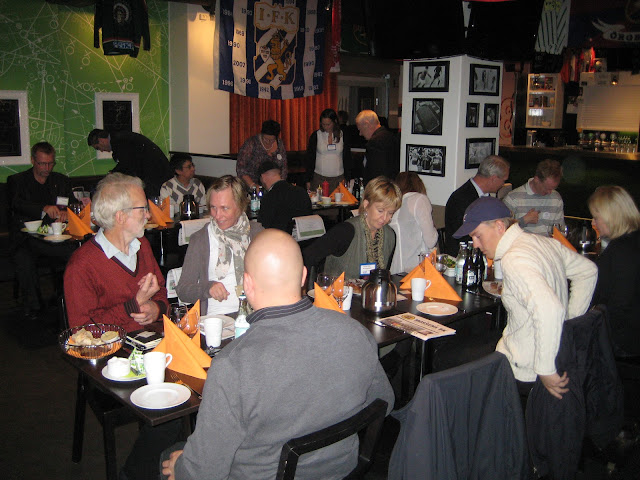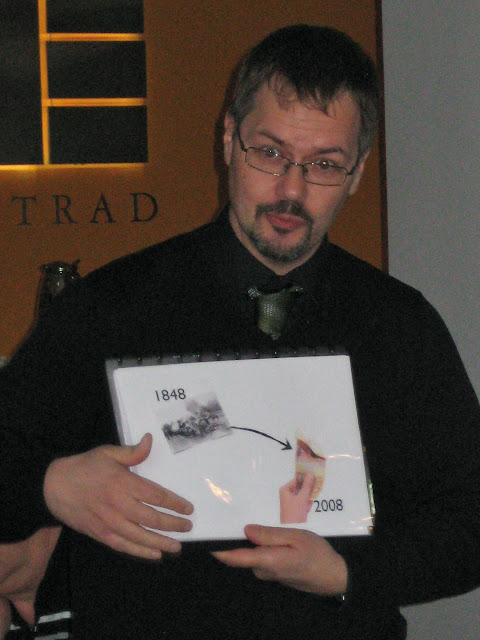30 presentations in 90 minutes: A visit to BNI Gamla Ullevi

I visited a BNI team, BNI Gamla Ullevi on Wednesday the 29th. I was invited by Per Johansson of the Skooter advertising agency. Gamla Ullevi (Old Ullevi - there is also a New Ullevi) is a sports arena in central Gothenburg. BNI Gamla Ullevi has 27 members. The team meets for lunch every Wednesday. If you visit on a day when all members are there, you'll hear 27 one minute presentations and two six minute presentations from team members. In addition, guests, like me, get 30 seconds to present themselves and their company. I did not count the exact number, but I think I heard about 30 business presentations at the meeting. This may sound like a lot, but BNI teams are very well organized. (Self-organized, I might add, in case you are interested in Agile software development or management.) Meetings take 90 minutes. It is a tight schedule, but I have never seen a BNI meeting that feels hurried. The trick is to keep everything flowing smoothly. If you observe carefully, p...

